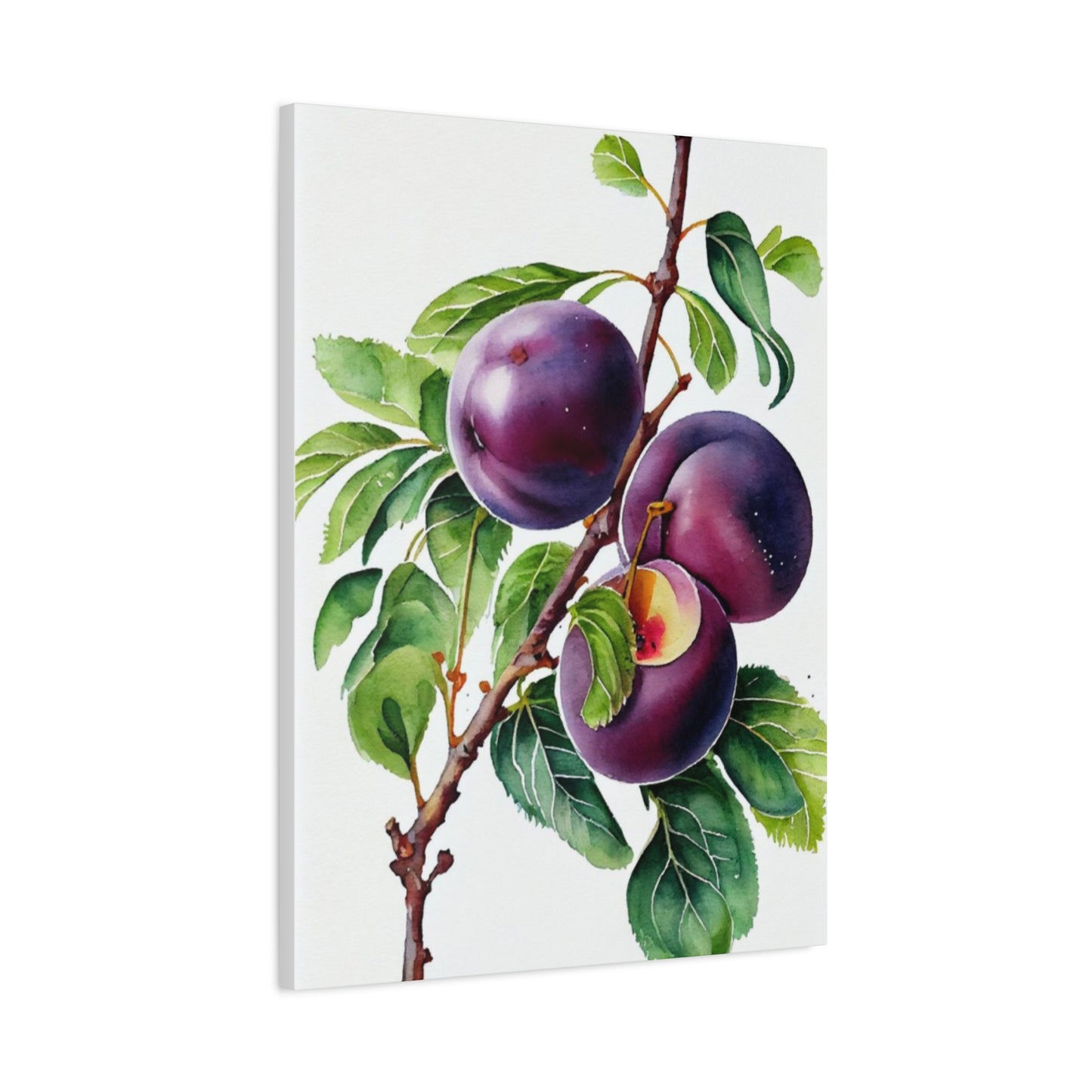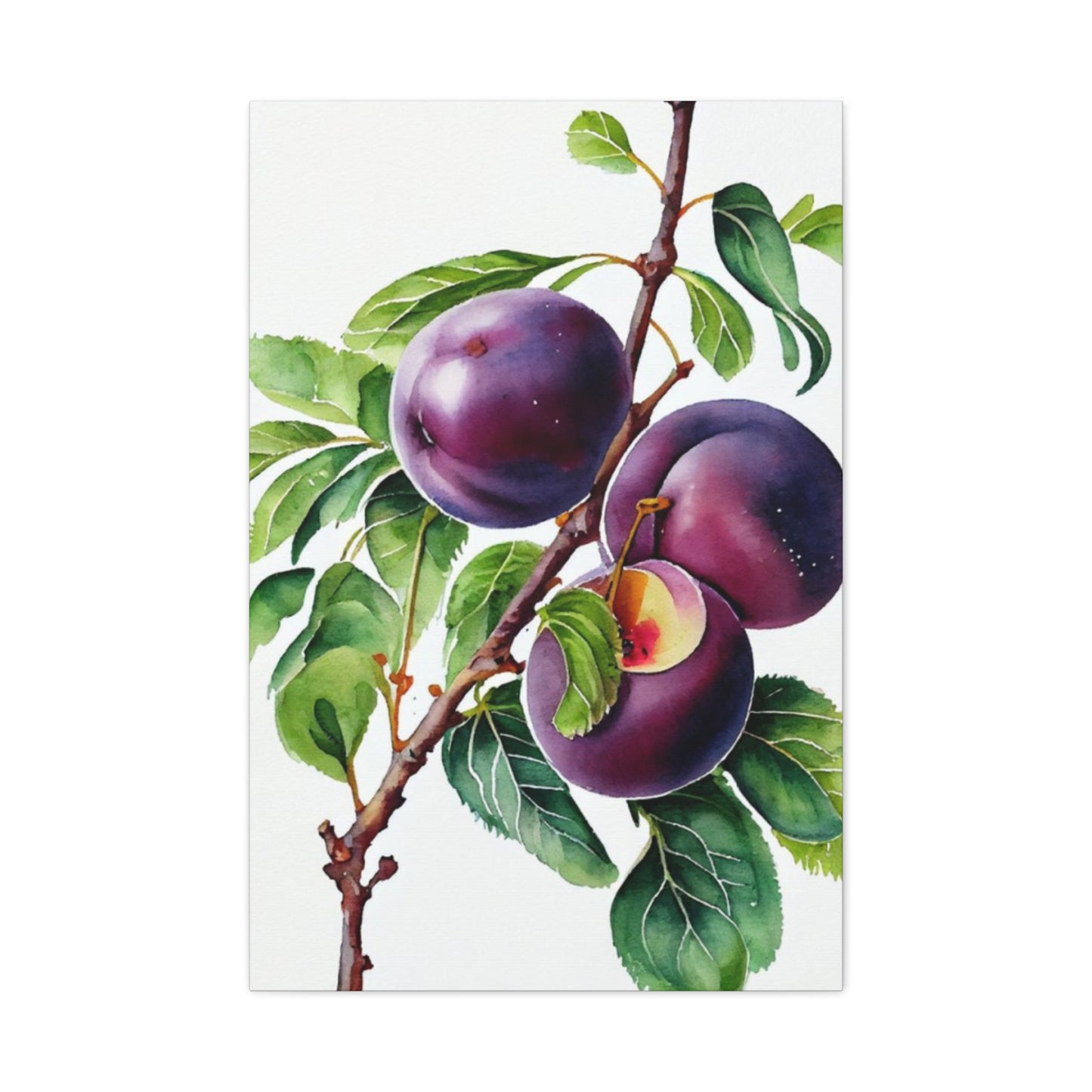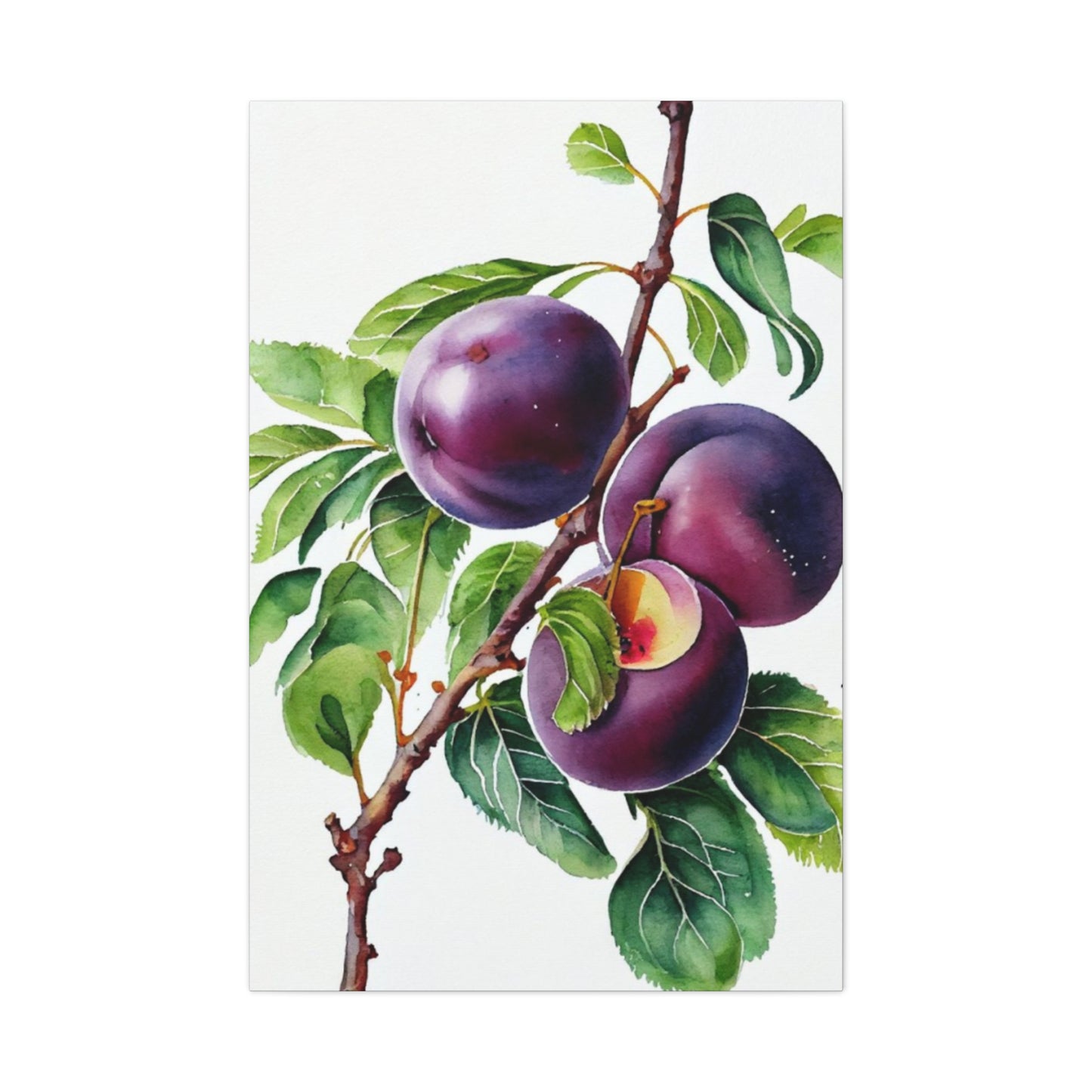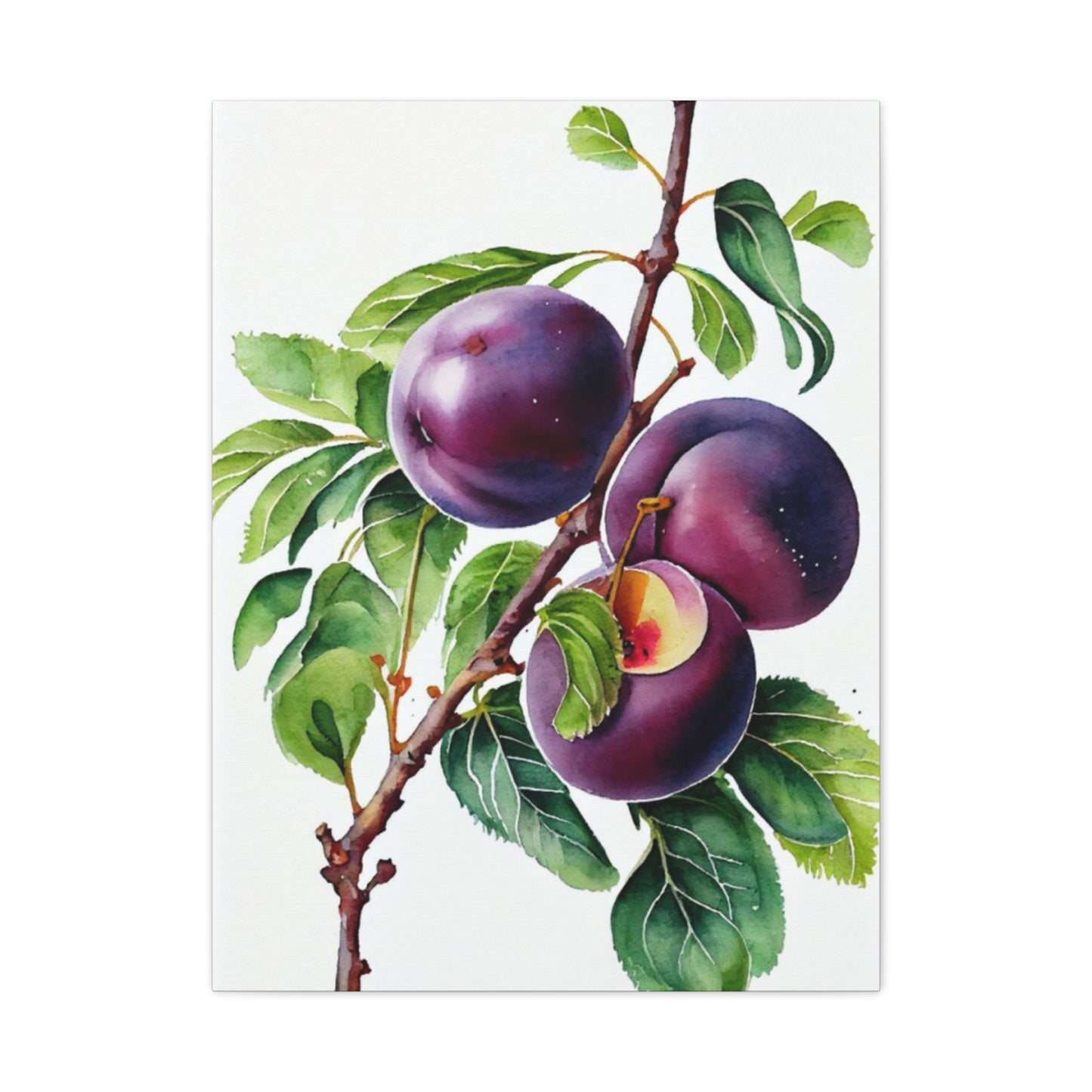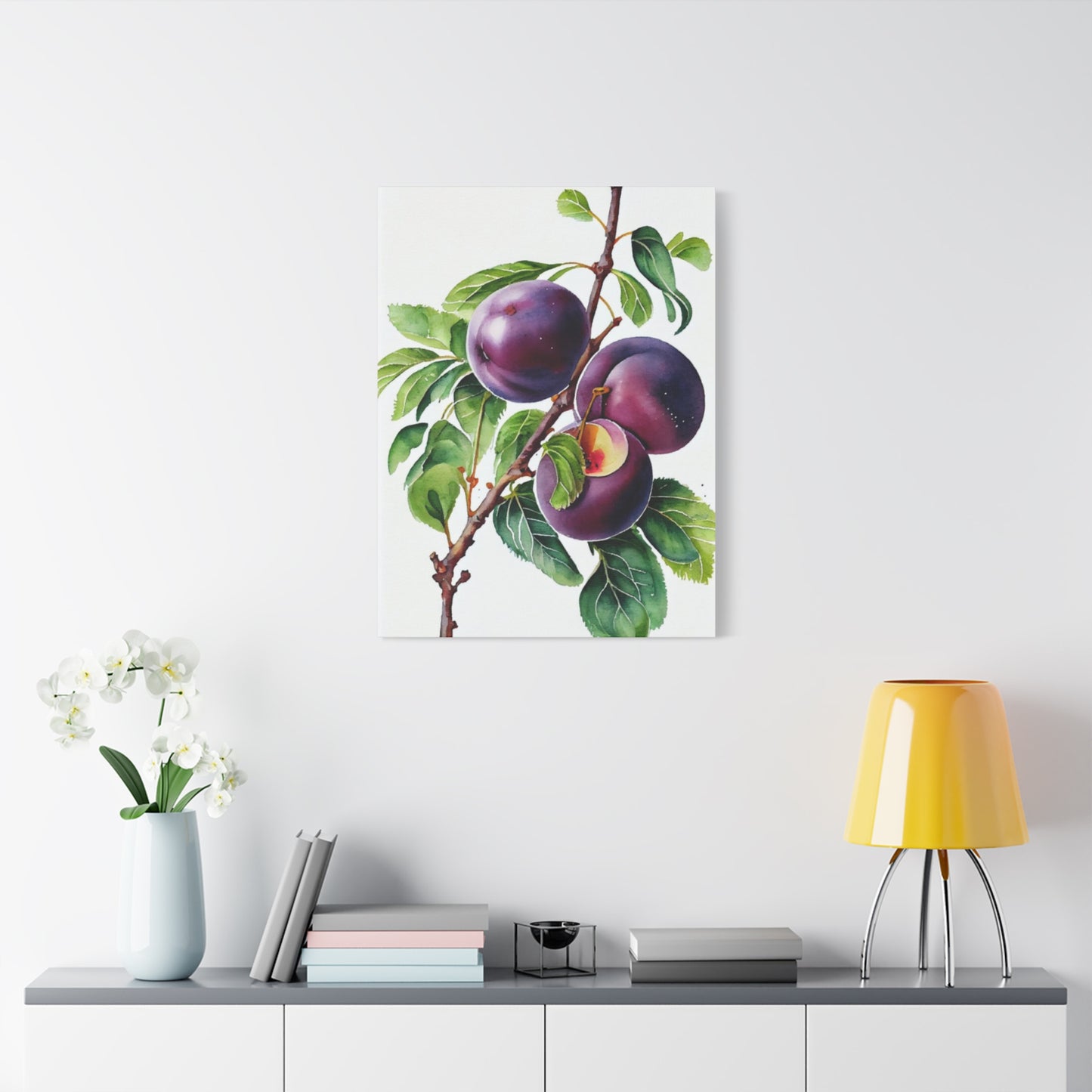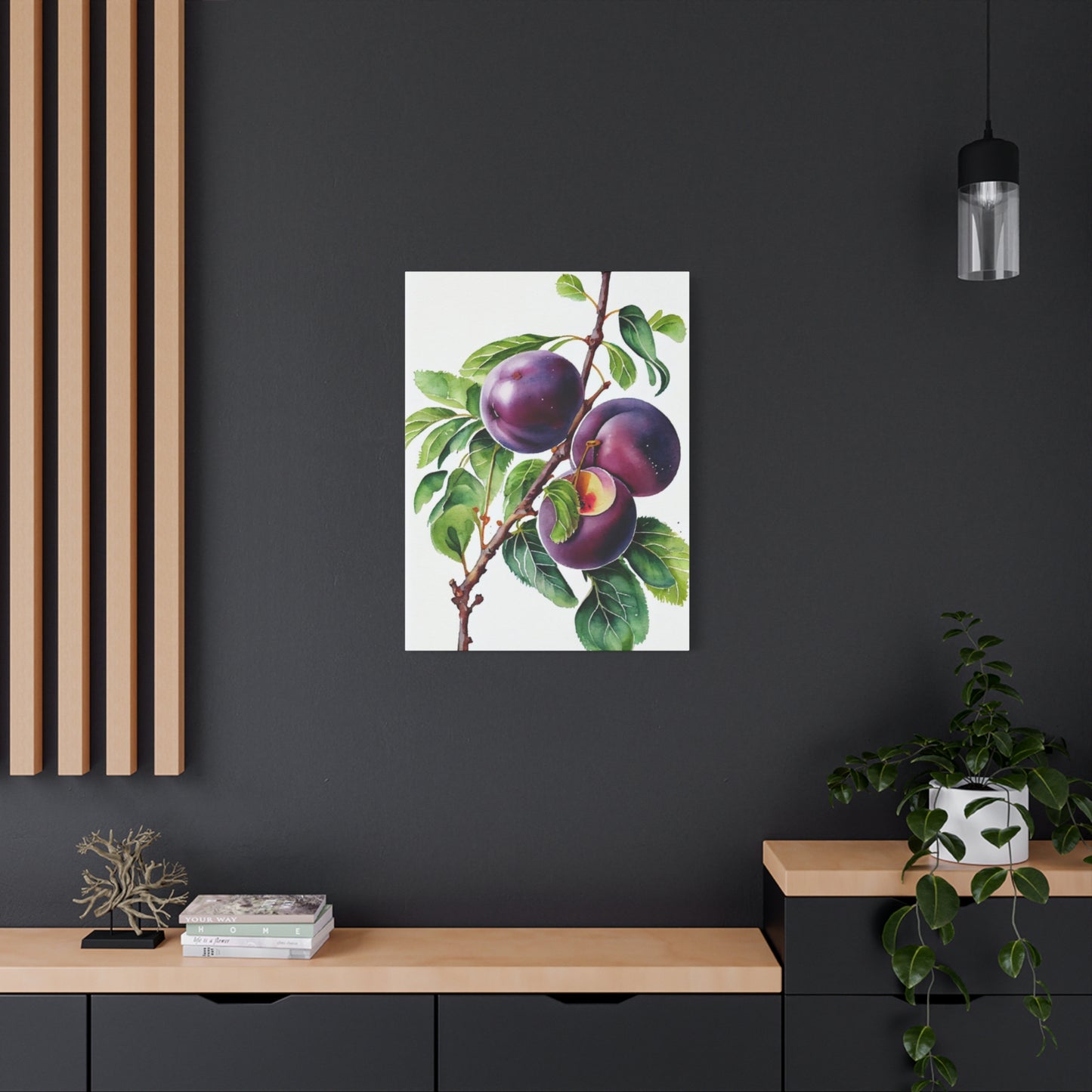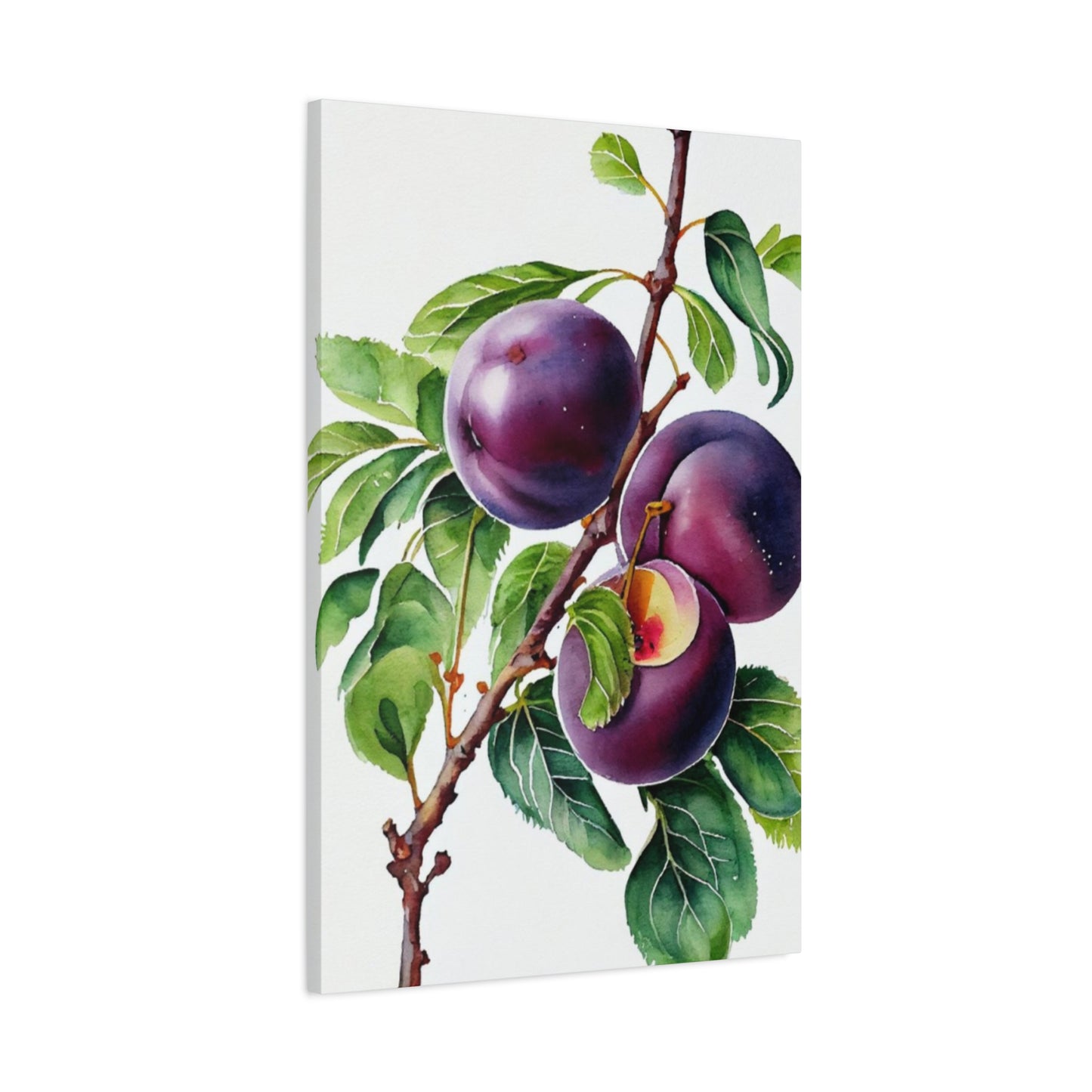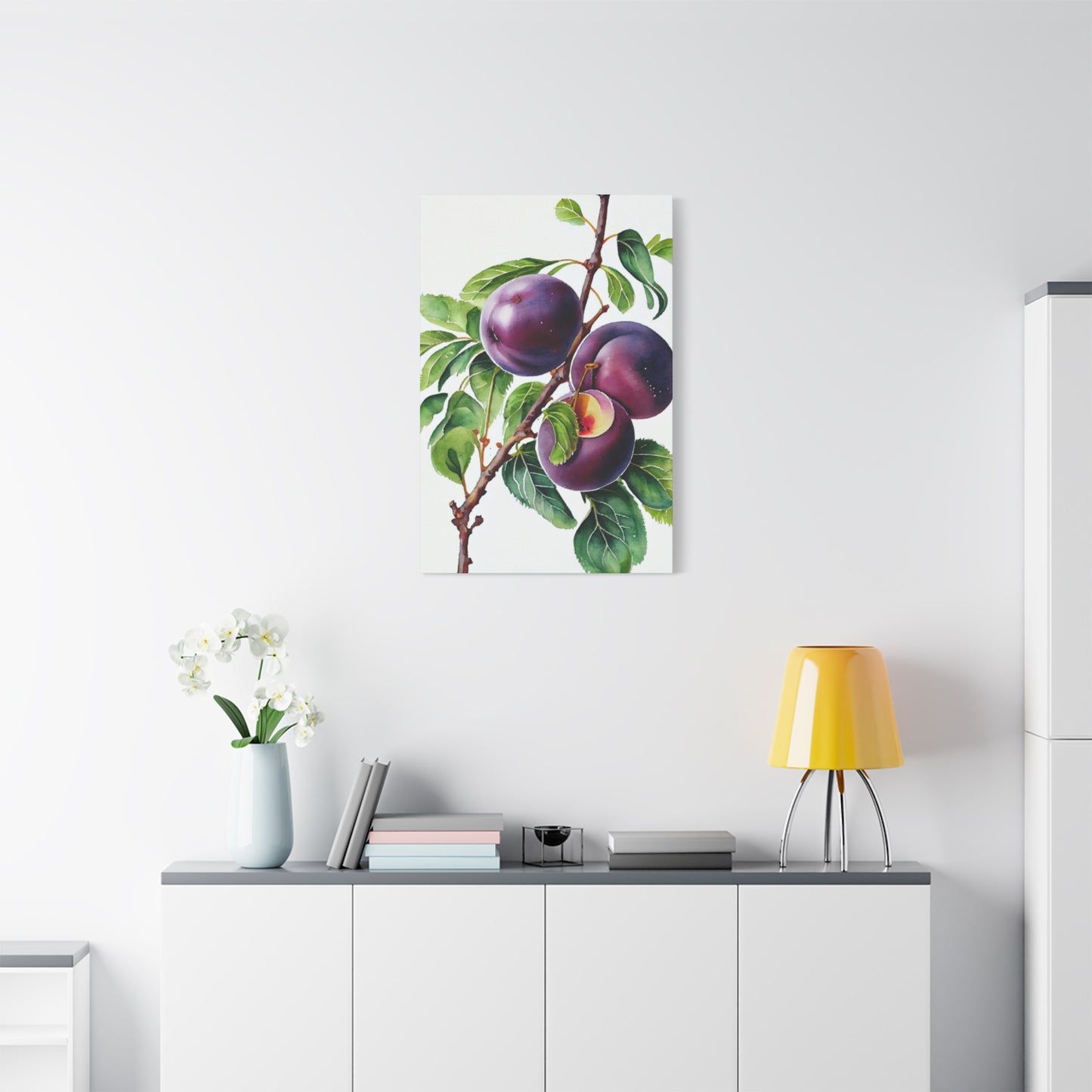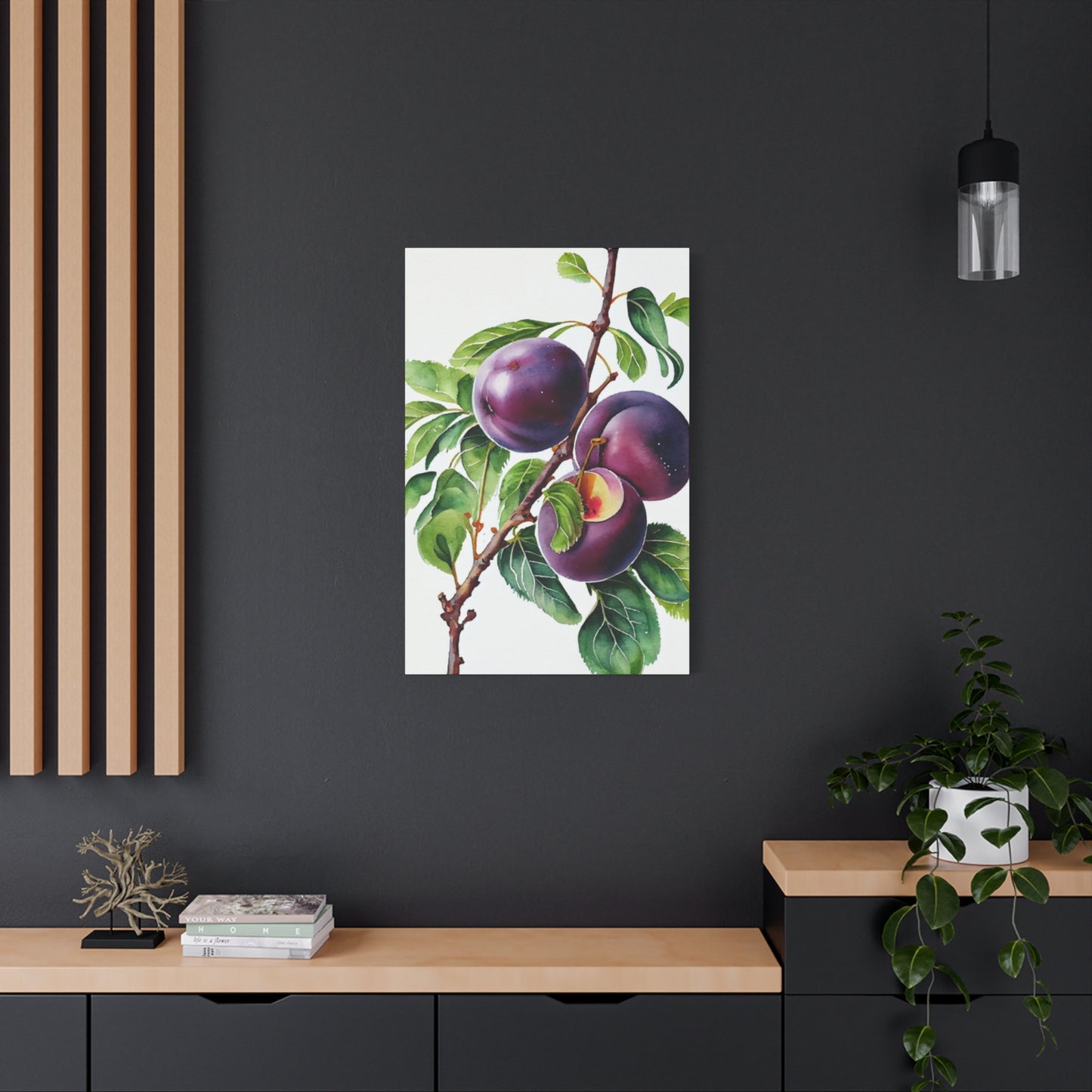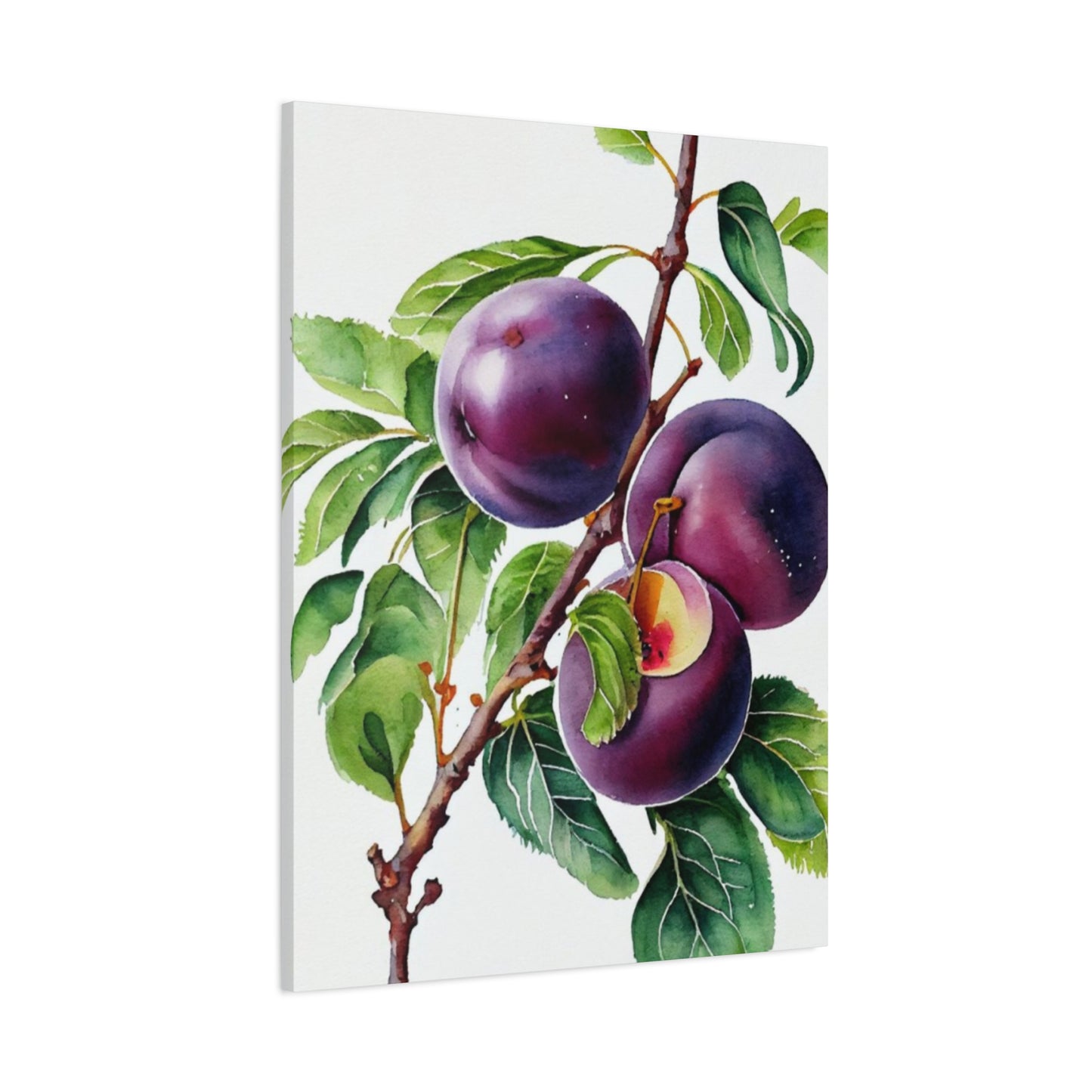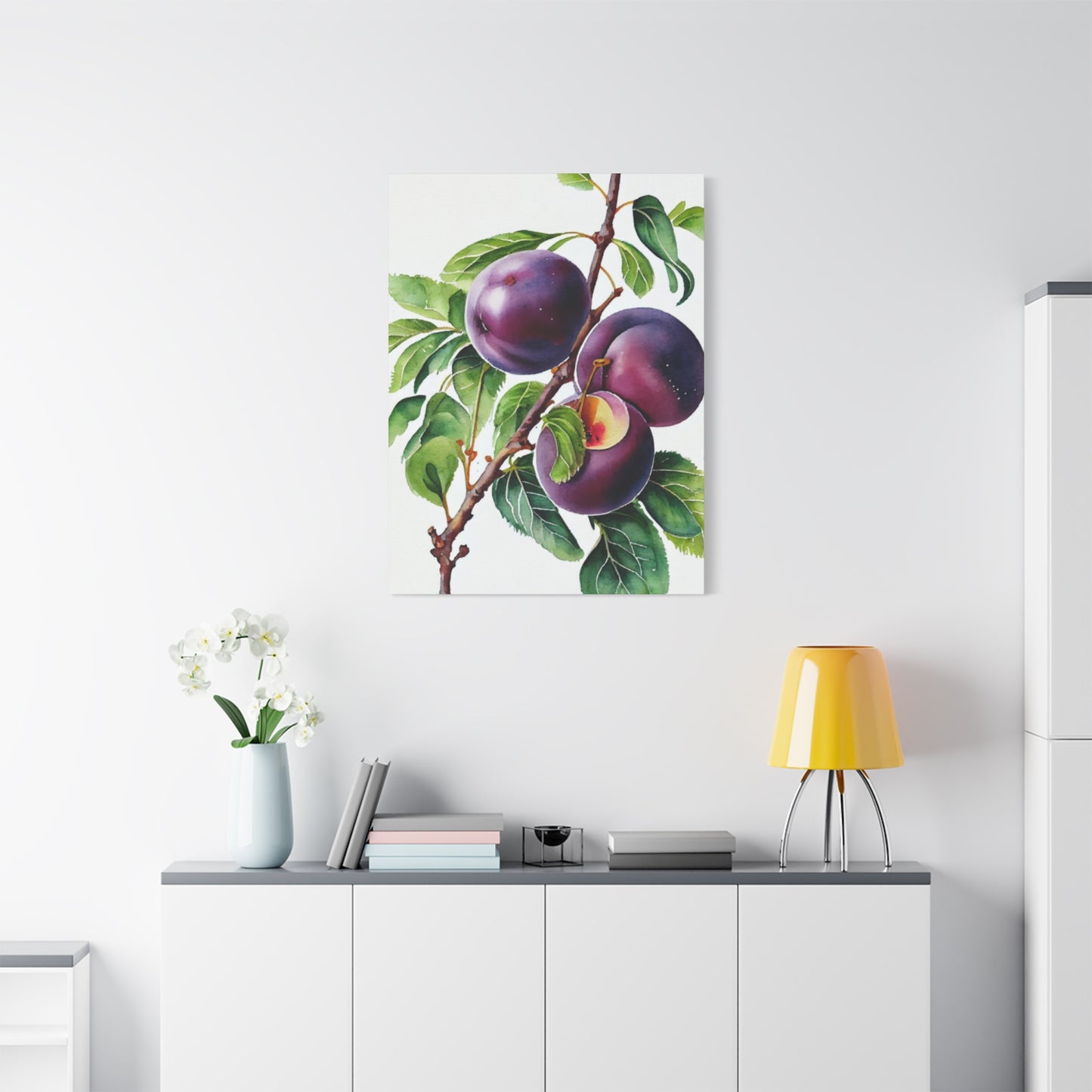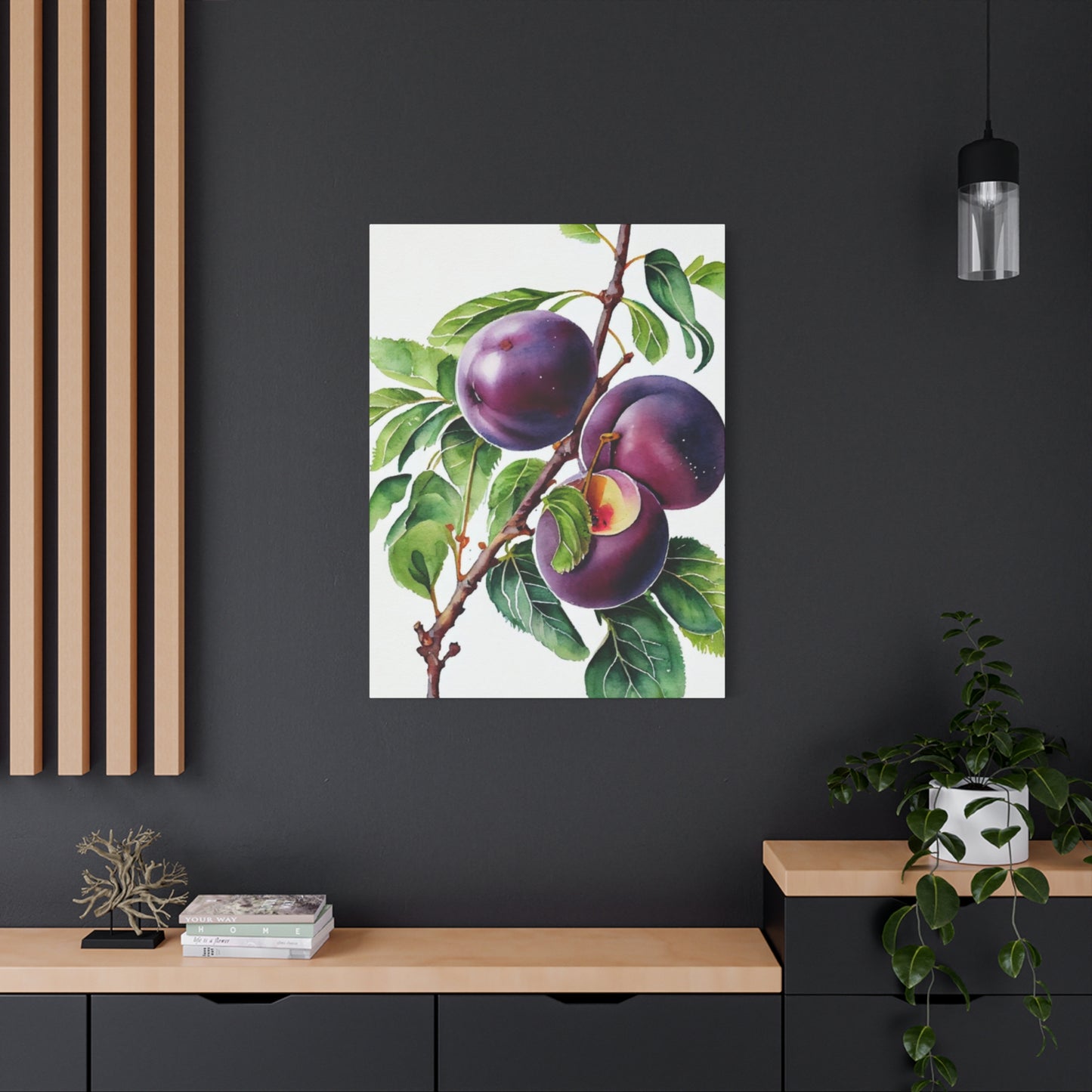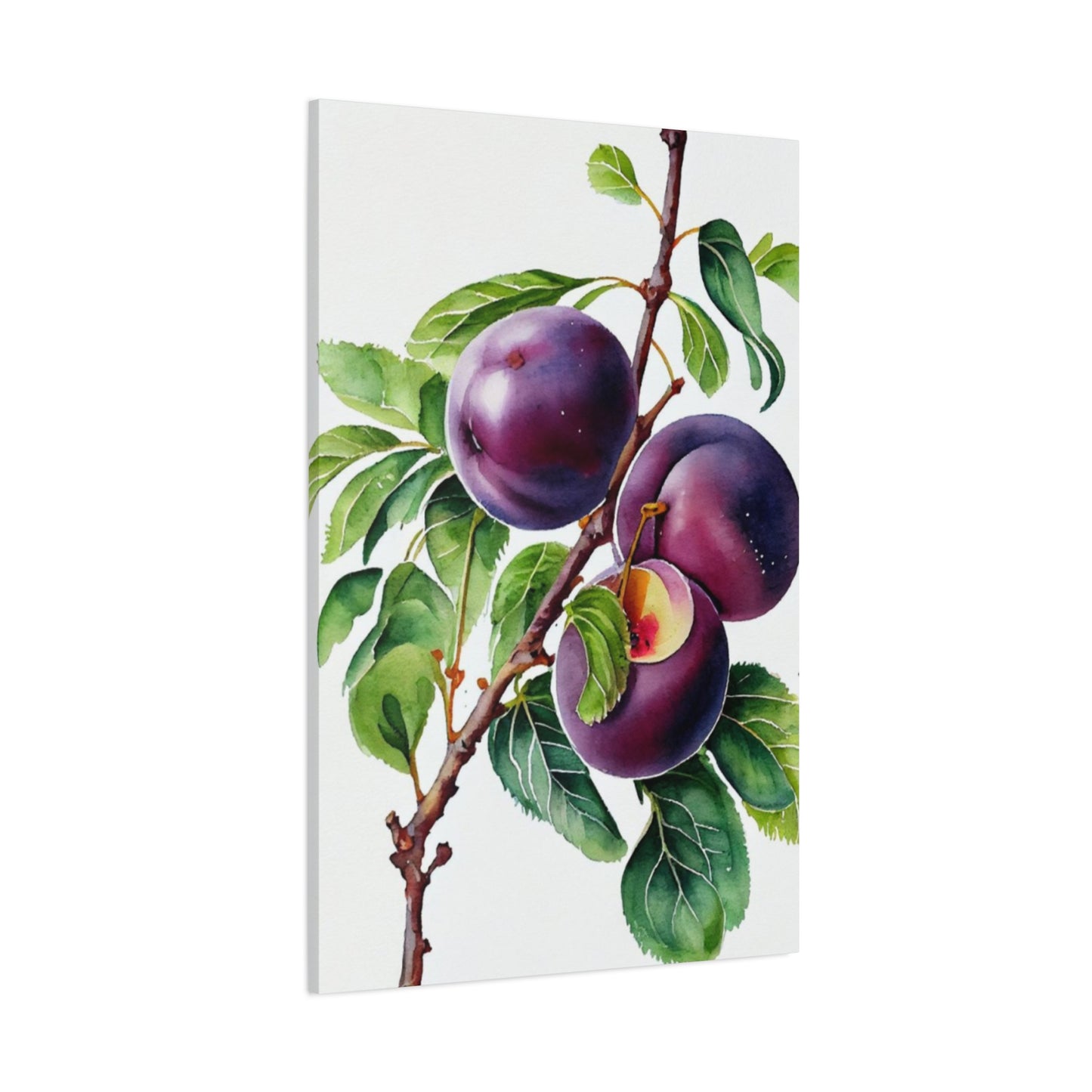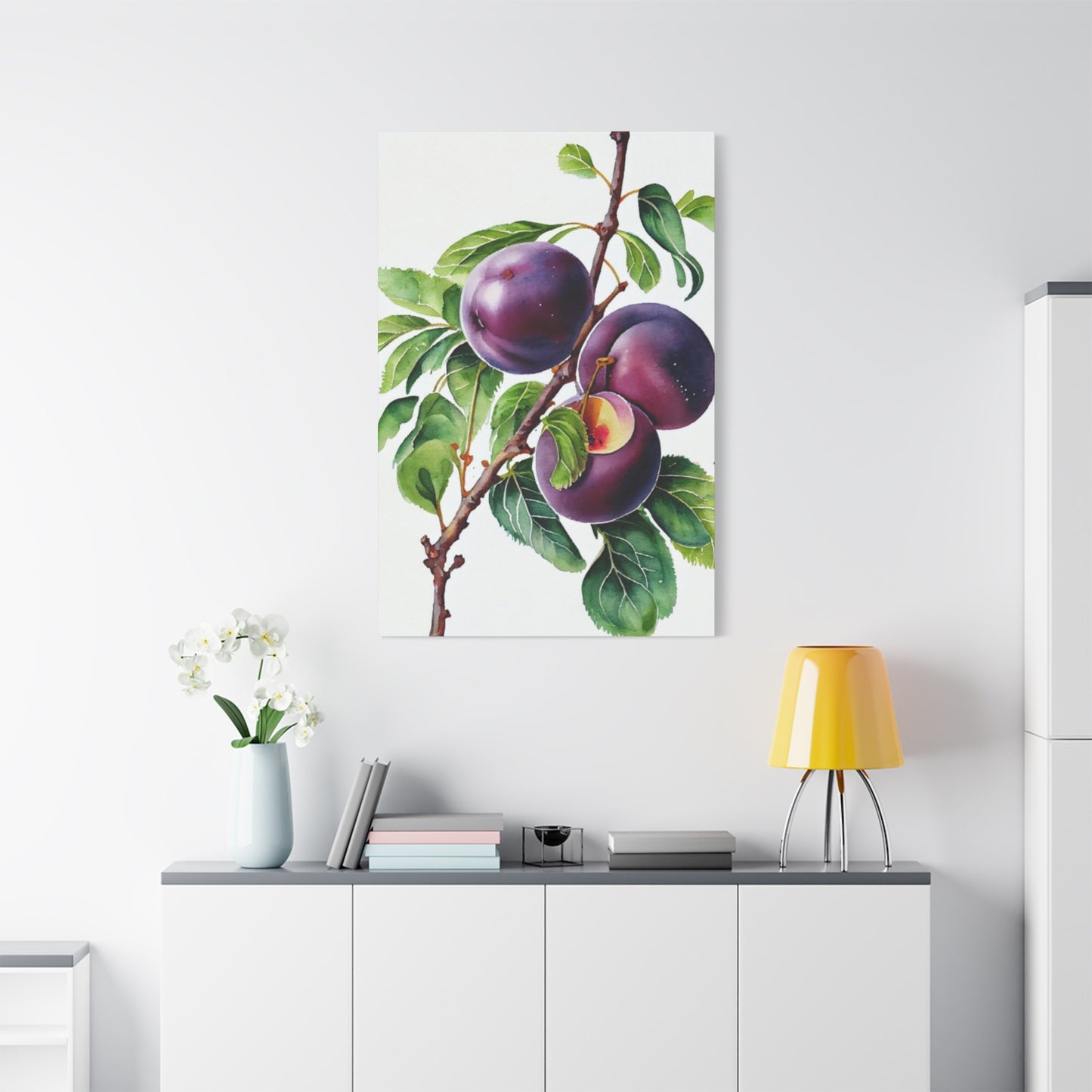Sophisticated Plum Wall Art: Creating Elegant Spaces with Rich Purple Tones
The world of interior design has witnessed a remarkable renaissance in the use of deep, rich colors that transform ordinary spaces into extraordinary sanctuaries. Among these captivating hues, plum stands as a testament to sophistication, elegance, and timeless beauty. This comprehensive exploration delves into the multifaceted world of plum wall art, revealing how this majestic color can revolutionize your living spaces while creating an atmosphere of refined luxury and artistic expression.
Plum, with its complex undertones and versatile nature, offers interior designers and homeowners an unparalleled opportunity to create spaces that exude both warmth and sophistication. This rich purple hue carries within it the depth of burgundy, the mystery of deep violet, and the warmth of reddish undertones, making it an ideal choice for those seeking to create environments that are both inviting and dramatically beautiful.
The journey into plum wall art begins with understanding the color's inherent characteristics and its ability to transform any space into a canvas of artistic expression. Whether incorporated through large-scale paintings, intricate prints, or carefully curated collections, plum wall art serves as more than mere decoration – it becomes the focal point that defines the entire aesthetic of a room.
Contemporary interior design trends have increasingly embraced the power of bold colors to create statement walls and artistic focal points. Plum, in particular, has emerged as a favorite among designers who seek to balance drama with elegance, creating spaces that feel both modern and timeless. The color's ability to work harmoniously with various design styles, from traditional to contemporary, makes it an invaluable tool in the designer's palette.
The psychological impact of plum cannot be understated when considering its application in wall art. This rich hue has been associated with creativity, spirituality, and introspection, making it an excellent choice for spaces designed for relaxation, contemplation, or artistic pursuits. The color's ability to create a sense of intimacy while maintaining sophistication makes it particularly well-suited for bedrooms, studies, and living areas where comfort and style must coexist.
Natural Beauty Captured in Plum Tones
Nature provides an endless source of inspiration for artists working with plum tones, offering countless opportunities to capture the earth's beauty through this rich, sophisticated color palette. The natural world presents plum in its most authentic forms – from the deep purple of ripe plums hanging heavy on autumn branches to the dusky twilight skies that paint evening horizons in shades of deep violet and burgundy.
Artists who specialize in nature-inspired plum wall art understand the profound connection between color and emotion, using this understanding to create pieces that bring the serenity and beauty of the natural world into interior spaces. These artworks serve as windows to nature, allowing viewers to experience the calm and restoration that comes from connecting with the natural environment, even when indoors.
The depiction of sunsets in plum tones offers a particularly striking approach to nature-inspired wall art. These pieces capture the magical moments when day transitions to night, and the sky becomes a canvas painted in deep purples, rich magentas, and warm burgundies. Such artworks bring the romance and drama of sunset moments into living spaces, creating focal points that inspire contemplation and wonder.
Forest scenes rendered in plum tones take on an almost mystical quality, transforming familiar woodland imagery into something more magical and ethereal. Artists use varying shades of plum to create depth and dimension in these pieces, with lighter plum tones representing dappled sunlight filtering through leaves, while deeper shades create shadows and mystery within the forest depths.
Botanical art featuring plum tones brings the garden indoors in the most sophisticated way possible. Whether depicting the delicate petals of plum-colored flowers or the rich foliage of autumn leaves, these pieces celebrate the natural world's color palette while adding elegance and refinement to interior spaces. The organic shapes and natural forms provide a beautiful contrast to the geometric lines often found in modern architecture and furniture.
Mountain landscapes interpreted through plum color schemes offer viewers a sense of majesty and grandeur. These pieces use the color's natural depth to convey the imposing presence of mountain ranges, with lighter plum tones representing distant peaks fading into twilight, while deeper shades ground the composition and create a sense of solidity and permanence.
Waterscapes in plum tones present yet another facet of nature's beauty, with artists using the color to capture reflective surfaces that mirror plum-colored skies or the mysterious depths of evening waters. These pieces often incorporate flowing, organic lines that echo the movement of water while utilizing plum's natural calming properties to create spaces of tranquility and peace.
Romantic Elegance Through Plum and Gold Combinations
The marriage of plum and gold in wall art creates an atmosphere of unparalleled luxury and romantic sophistication. This color combination has been celebrated throughout history as a symbol of opulence and refinement, with its roots tracing back to royal courts and aristocratic residences where such rich color palettes were reserved for the most important spaces.
Gold accents in plum-dominated artworks serve multiple purposes, providing luminous highlights that catch and reflect light while adding warmth to the cooler undertones of plum. This interplay between warm and cool tones creates visual interest and depth, preventing the space from feeling too monochromatic while maintaining the sophisticated elegance that both colors individually represent.
Romantic wall art featuring plum and gold often incorporates flowing, organic forms that echo the natural world while maintaining an air of luxury and sophistication. These pieces might feature stylized florals, abstract organic shapes, or even figurative elements that celebrate love and romance. The gold elements serve to highlight key areas of the composition, drawing the viewer's eye to focal points while creating a sense of movement and energy within the piece.
The application of metallic gold in plum wall art requires careful consideration of lighting conditions within the space. Natural light brings out the warmth in gold accents, creating a dynamic relationship between the artwork and its environment that changes throughout the day. Evening lighting, whether artificial or natural, tends to emphasize the richness of plum tones while the gold elements provide gentle luminescence that adds warmth and intimacy to the space.
Textural elements play a crucial role in plum and gold wall art, with artists often employing techniques that create physical dimension and surface interest. Raised gold leaf applications, textured paint techniques, or even mixed media approaches that incorporate actual metallic elements can transform a flat surface into a piece that engages both visual and tactile senses.
The historical significance of plum and gold combinations adds depth and meaning to contemporary interpretations of this color scheme. These colors have been associated with spirituality, royalty, and artistic expression across various cultures and time periods, lending contemporary artworks a sense of connection to broader human experiences and cultural traditions.
Scale considerations become particularly important when working with plum and gold wall art, as the richness of these colors can be overwhelming in smaller spaces while providing stunning impact in larger rooms. Artists and interior designers must carefully balance the intensity of these hues with the proportions of the space and the other design elements present.
Seasonal Warmth in Autumn-Inspired Plum and Rust Art
Autumn-inspired wall art featuring plum and rust tones captures the essence of fall's most beautiful moments, bringing the season's warmth and richness indoors through carefully crafted color palettes that celebrate nature's annual transformation. This seasonal approach to plum wall art connects interior spaces with the natural rhythms of the year, creating environments that feel both timely and timeless.
The combination of plum and rust colors mirrors the natural progression of autumn leaves, from the deep purples of grape vines to the warm rust tones of oak and maple leaves. Artists working in this palette understand the emotional resonance of these colors, using them to evoke feelings of coziness, warmth, and the gentle melancholy that accompanies seasonal change.
Landscape paintings featuring autumn scenes in plum and rust tones transport viewers to crisp fall days, with artwork that captures the golden light of autumn afternoons filtering through trees painted in rich plum and rust hues. These pieces serve as visual reminders of nature's beauty and the cyclical nature of seasons, bringing a sense of grounding and connection to the natural world into interior spaces.
Abstract interpretations of autumn using plum and rust colors offer a more contemporary approach to seasonal wall art. These pieces distill the essence of fall into pure color and form, creating artworks that suggest rather than literally represent the season. Such approaches allow for greater flexibility in terms of interior design integration while still maintaining the emotional impact associated with autumn's color palette.
Botanical studies focusing on autumn foliage provide another avenue for exploring plum and rust combinations in wall art. These detailed depictions of leaves, berries, and other seasonal elements create intimate connections with nature while showcasing the sophisticated beauty of these rich color combinations. The scientific accuracy of botanical art combined with the emotional resonance of seasonal colors creates pieces that are both educational and deeply moving.
The textural qualities inherent in autumn-inspired plum and rust wall art often reflect the season's own textural richness. Artists might employ techniques that mimic the rough bark of trees, the delicate veining of leaves, or the varied surfaces found in autumn landscapes. These textural elements add depth and interest to the artworks while reinforcing their connection to the natural world.
Lighting considerations become particularly important with autumn-inspired plum and rust wall art, as these colors are designed to evoke the warm, golden light characteristic of fall afternoons. Proper lighting can enhance the warmth in these colors while creating the kind of cozy atmosphere that makes autumn such a beloved season for many people.
Contemporary Statement Pieces in Bold Plum
Modern art movements have embraced plum as a powerful statement color, utilizing its dramatic presence to create bold, contemporary pieces that serve as focal points in sophisticated interior spaces. These statement artworks demonstrate plum's versatility and its ability to work within contemporary design frameworks while maintaining its inherent elegance and depth.
Large-scale contemporary plum wall art requires careful consideration of space and proportion, as the color's intensity can dominate a room when used in significant quantities. However, when properly scaled and positioned, these bold pieces create dramatic focal points that anchor entire room designs and provide sophisticated backdrops for modern furniture and accessories.
Abstract expressionist approaches to plum wall art allow artists to explore the color's emotional and psychological properties without the constraints of representational imagery. These pieces often feature bold brushstrokes, dynamic compositions, and varied textures that showcase plum's range from deep, mysterious darks to lighter, more ethereal tones. The resulting artworks serve as emotional landscapes that invite contemplation and interpretation.
Minimalist interpretations of plum in contemporary wall art focus on the color's inherent beauty and sophistication, stripping away unnecessary elements to create pieces that celebrate pure color and form. These artworks often feature simple geometric shapes, clean lines, and subtle variations in plum tones that create sophisticated visual experiences without overwhelming the space or competing with other design elements.
Contemporary plum statement pieces often incorporate mixed media approaches, combining traditional painting techniques with modern materials and methods. These might include digital printing on various substrates, incorporation of metallic elements, or even three-dimensional components that create physical depth and shadow play. Such approaches push the boundaries of traditional wall art while maintaining focus on plum's sophisticated presence.
The installation and presentation of contemporary plum statement pieces requires careful attention to surrounding elements, including wall color, lighting, and nearby furnishings. These bold artworks need space to breathe and be appreciated, often working best when given prominent placement with minimal visual competition from other decorative elements.
Color theory plays a crucial role in contemporary plum statement art, with artists carefully considering how different shades and tones of plum interact with each other and with any accent colors that might be included. The goal is to create sophisticated color relationships that enhance rather than overwhelm the living space while maintaining the dramatic impact that makes these pieces true statement artworks.
Ethereal Beauty in Watercolor Plum Dreams
Watercolor techniques applied to plum-toned artwork create some of the most ethereal and romantic pieces available in contemporary wall art. The medium's inherent translucency and fluidity perfectly complement plum's sophisticated nature, resulting in artworks that seem to float and breathe within their frames, bringing a sense of lightness and dream-like quality to interior spaces.
The watercolor medium allows for subtle gradations and color bleeding that are impossible to achieve with other painting techniques. When applied to plum tones, these characteristics create artworks with incredible depth and complexity, as colors seem to emerge and recede within the composition, creating visual experiences that change depending on viewing angle and lighting conditions.
Lavender and plum combinations in watercolor create particularly dreamy effects, with the lighter lavender tones providing gentle highlights and creating a sense of atmospheric perspective. These color relationships evoke feelings of serenity and calm, making watercolor plum artworks ideal for bedrooms, meditation spaces, or any area where relaxation and peace are priorities.
Abstract watercolor plum pieces often feature organic, flowing forms that suggest natural elements without literally representing them. These artworks capture the essence of clouds, water, or flowing fabric, using plum's rich tones to create compositions that feel both grounded and ethereal. The unpredictable nature of watercolor adds an element of spontaneity and life to these pieces.
Floral interpretations in watercolor plum showcase the medium's ability to capture delicate details while maintaining overall softness and romance. Artists working in this style often focus on individual blooms or small arrangements, using plum tones to create sophisticated color studies that bring the beauty of flowers indoors without the literal representation that might clash with modern interior design approaches.
The paper selection for watercolor plum artworks significantly impacts the final result, with different papers providing various textures and absorption qualities that affect how the plum pigments interact with the surface. Artists must carefully consider these technical aspects to achieve the desired ethereal effects while ensuring the longevity and stability of the finished pieces.
Framing and presentation considerations for watercolor plum art require special attention to preservation and display concerns. The delicate nature of watercolor demands protection from direct sunlight and moisture, while the ethereal quality of these pieces often benefits from clean, simple framing approaches that don't compete with the artwork's inherent beauty.
Sophisticated Floral Focus in Deep Purple and Pink Tones
Floral art rendered in plum tones represents one of the most sophisticated approaches to botanical wall decor, transforming traditional flower paintings into contemporary masterpieces that bring elegance and natural beauty into modern living spaces. The focus on deep purples and rich pinks creates artworks that are both romantically appealing and dramatically sophisticated.
Roses depicted in plum tones take on an almost mysterious quality, with deep purple shadows and rich pink highlights creating dimensional flowers that seem to emerge from the canvas. These pieces capture the classic beauty of roses while presenting them in a sophisticated color palette that works beautifully in contemporary interior design schemes. The rich plum tones add depth and complexity to the familiar floral forms, creating artworks that feel both traditional and thoroughly modern.
Peony paintings in plum and deep pink showcase these beloved flowers in their most luxurious interpretation. The full, rounded forms of peonies lend themselves beautifully to plum color schemes, with artists able to use the color's natural variations to create realistic depth and dimension. These pieces often feature single blooms or small arrangements that serve as focal points for intimate spaces or as part of larger gallery wall arrangements.
Abstract floral interpretations using plum tones allow artists to capture the essence of flowers without being constrained by realistic representation. These pieces might suggest petal shapes, flowing stems, or the overall movement of blooms swaying in a breeze, using plum's rich tones to create sophisticated compositions that work seamlessly with contemporary decor while still maintaining connection to the natural world.
Large-scale floral pieces in plum tones create dramatic statement walls that transform entire rooms into sophisticated garden-inspired spaces. These oversized artworks require careful consideration of scale and placement, but when properly positioned, they create immersive environments that surround viewers with the beauty and elegance of stylized botanical forms.
The technique and medium selection for plum-toned floral art significantly impacts the final emotional and visual effect. Oil paintings tend to create rich, lustrous surfaces that enhance plum's natural depth, while acrylic applications might emphasize the color's more vibrant aspects. Watercolor interpretations, as discussed earlier, create ethereal, dreamy effects that emphasize the romantic aspects of floral subjects.
Color harmony in plum floral art requires careful attention to the relationships between different purple and pink tones, as well as any green elements that might be included for leaves or stems. The goal is to create sophisticated color relationships that enhance the natural beauty of floral forms while maintaining the elegant sophistication that makes plum such an appealing color choice for interior design applications.
Contemporary Geometric Plum Art for Modern Spaces
The intersection of geometric design principles and plum color palettes creates some of the most striking contemporary wall art available for modern interior spaces. These pieces combine the sophistication of plum tones with the clean, structured aesthetic of geometric design, resulting in artworks that feel both cutting-edge and timelessly elegant.
Geometric plum art often features clean lines, precise angles, and carefully planned compositions that create visual harmony through mathematical relationships and proportional balance. These structured approaches to composition provide a sophisticated counterpoint to plum's rich, emotional qualities, creating artworks that engage both intellectual and emotional responses from viewers.
Abstract geometric interpretations using plum gradients create pieces that seem to shift and change as viewers move or as lighting conditions change throughout the day. These works might feature subtle color transitions from deep plum to lighter lavender tones, creating depth and dimension through color relationships rather than perspective or shading techniques.
Minimalist geometric approaches to plum wall art strip compositions down to essential elements, focusing on pure form and color relationships without unnecessary decorative elements. These pieces often feature simple shapes – circles, squares, triangles – arranged in carefully planned compositions that create visual interest through proportion, spacing, and subtle color variations within the plum family.
Three-dimensional geometric plum art introduces physical depth and shadow play into the composition, creating pieces that change dramatically as lighting conditions shift throughout the day. These works might feature raised elements, recessed areas, or varying surface textures that interact with light to create dynamic visual experiences that keep viewers engaged over time.
Contemporary geometric plum art often incorporates digital design elements or computer-generated patterns that would be impossible to create through traditional artistic methods. These approaches allow for incredibly precise geometric relationships and color gradations that create sophisticated visual effects while maintaining the accessibility and emotional appeal of plum color palettes.
The scale and installation considerations for geometric plum art require careful planning, as the structured nature of these pieces often works best when given adequate space and proper positioning relative to architectural elements within the room. The clean lines and precise relationships in geometric art can either complement or conflict with architectural details, making proper placement crucial for success.
Cultural Richness in Asian-Inspired Plum Wall Art
Asian-inspired wall art featuring plum tones draws from rich cultural traditions that have celebrated this color family for centuries, creating contemporary pieces that honor historical artistic approaches while speaking to modern aesthetic sensibilities. These artworks bring cultural depth and sophisticated beauty into contemporary interior spaces.
Traditional Japanese approaches to plum color in art often feature the plum blossom, a flower that holds deep cultural significance as a symbol of perseverance, hope, and beauty emerging from difficulty. Contemporary interpretations of these traditional subjects maintain the spiritual and emotional resonance of the original imagery while adapting the visual language for modern interior spaces.
Chinese artistic traditions have long celebrated plum colors in various contexts, from landscape paintings featuring plum trees to decorative arts incorporating plum tones in geometric and floral patterns. Modern artists drawing from these traditions create pieces that honor the cultural significance of these colors while creating fresh interpretations appropriate for contemporary homes and commercial spaces.
Calligraphic elements incorporated into plum-toned wall art create sophisticated pieces that combine visual beauty with literary and spiritual meaning. These works might feature traditional poetry, philosophical sayings, or even contemporary text rendered in traditional calligraphic styles, with plum tones providing elegant backgrounds or accent colors that enhance the overall composition.
Abstract interpretations of traditional Asian artistic principles using plum color palettes create contemporary pieces that capture the essence of Eastern aesthetic philosophy while remaining accessible to Western viewers. These works might explore concepts of balance, harmony, and natural beauty through composition and color relationships rather than literal representation.
The materials and techniques associated with Asian artistic traditions add authenticity and depth to contemporary plum wall art. Artists might incorporate traditional papers, silk backgrounds, or even digital recreations of traditional printing techniques to create pieces that honor cultural heritage while meeting contemporary production and durability standards.
Zen-inspired approaches to plum wall art focus on simplicity, balance, and the creation of peaceful, contemplative spaces. These pieces often feature minimal compositions with carefully chosen plum tones that create calming environments conducive to meditation and reflection. The goal is to create artworks that enhance rather than dominate their surroundings while providing focal points for contemplation and spiritual practice.
Artistic Techniques and Material Considerations
The creation of sophisticated plum wall art requires careful consideration of artistic techniques and material choices that will best serve both the aesthetic goals of the artwork and the practical requirements of interior display. Different approaches to medium, surface preparation, and application techniques can dramatically affect the final appearance and longevity of plum-toned artworks.
Oil painting techniques offer particular advantages when working with plum tones, as the medium's natural richness and ability to create lustrous surfaces enhance the sophisticated qualities inherent in this color family. The slow-drying nature of oils allows for extended working time and sophisticated color blending that can create incredibly subtle transitions between different plum tones and accent colors.
Acrylic mediums provide versatility and durability for plum wall art, with modern formulations offering excellent color permanence and the ability to create both transparent glazes and opaque coverage as desired. The quick-drying nature of acrylics allows for layering techniques that can create complex color relationships and textural effects that enhance the visual interest of plum-based compositions.
Mixed media approaches to plum wall art allow artists to combine various materials and techniques to create unique surface treatments and visual effects. These might include combinations of traditional painting mediums with collage elements, metallic leafing, or even digital printing components that add contemporary elements to traditional artistic approaches.
Canvas selection significantly impacts the final appearance of plum wall art, with different weaves, textures, and preparation methods affecting how pigments adhere and appear on the surface. Smooth, finely woven canvases work well for detailed work and precise color application, while more textured surfaces can add visual interest and create subtle variations in color appearance.
Paper-based substrates offer unique opportunities for plum wall art, particularly for works incorporating watercolor, printmaking, or mixed media approaches. The choice of paper weight, texture, and fiber content affects both the working properties during creation and the long-term stability and appearance of the finished artwork.
Color permanence considerations become particularly important with plum tones, as some pigments in the purple family are more susceptible to fading or color shift over time. Professional artists working in this color family must carefully select pigments with proven lightfastness ratings to ensure their artworks maintain their intended appearance over many years of display.
Lighting Design for Plum Wall Art Display
The proper lighting of plum wall art is crucial for achieving the intended visual impact and ensuring that the sophisticated color relationships within the artwork are properly displayed. Plum tones can appear dramatically different under various lighting conditions, making careful consideration of both natural and artificial lighting essential for successful installation.
Natural lighting conditions change throughout the day, affecting how plum wall art appears at different times. Morning light tends to be cooler and may emphasize the blue undertones in plum colors, while afternoon and evening light becomes warmer and can bring out the red and burgundy aspects of the color family. Understanding these natural variations allows for better planning of artwork placement and can even be used as a design feature.
Artificial lighting options for plum wall art include various technologies and approaches, each offering different advantages for color rendering and visual impact. LED lighting systems provide excellent color accuracy and can be dimmed or adjusted for different effects, while traditional incandescent lighting offers warm color temperatures that can enhance the richness of plum tones.
Track lighting systems offer flexibility for illuminating plum wall art, allowing for precise control of light direction, intensity, and coverage. These systems can be particularly effective for gallery wall arrangements or when multiple pieces need individual attention while maintaining overall lighting harmony within the space.
Picture lighting, including both battery-operated and hardwired options, provides focused illumination directly on artwork surfaces. For plum wall art, these systems should offer color temperatures that complement rather than fight with the color palette, typically favoring warmer temperatures that enhance the richness of purple tones.
Ambient lighting considerations must also be addressed when displaying plum wall art, as the surrounding light environment significantly affects how the artwork appears. Room lighting should complement the artwork lighting while avoiding color temperatures or intensities that create unflattering contrasts or wash out the subtle color relationships within plum-toned pieces.
Light positioning requires careful attention to avoid glare or unwanted reflections, particularly with textured or glossy surfaces that might be incorporated into plum wall art. The goal is to provide even illumination that reveals the artwork's details and color relationships without creating distracting visual artifacts that detract from the overall viewing experience.
Interior Design Integration and Style Compatibility
Successfully integrating plum wall art into existing interior design schemes requires understanding how this sophisticated color family interacts with various design styles and architectural elements. Plum's versatility allows it to work within numerous design frameworks, but achieving harmonious integration requires careful consideration of existing colors, textures, and stylistic elements.
Traditional interior design styles often embrace rich colors like plum, making integration relatively straightforward when working with classic furniture pieces, rich fabrics, and ornate decorative elements. In these settings, plum wall art can serve as a sophisticated backdrop that enhances the overall sense of luxury and refinement that traditional styles seek to achieve.
Contemporary design approaches may require more careful consideration when incorporating plum wall art, as modern aesthetics often favor neutral color palettes and clean lines. However, plum can serve as an excellent accent color in contemporary spaces, providing sophisticated color interest without overwhelming the clean, uncluttered aesthetic that contemporary design values.
Transitional design styles, which bridge traditional and contemporary approaches, offer excellent opportunities for plum wall art integration. These design frameworks are specifically designed to incorporate elements from both traditional and modern aesthetics, making them naturally accommodating for the sophisticated richness of plum-toned artworks.
Bohemian and eclectic design styles welcome bold colors like plum, often incorporating them into layered, textured environments that celebrate color and pattern diversity. In these settings, plum wall art can serve as an anchor point around which other colorful elements are arranged, or as one element in a rich tapestry of colors and patterns.
Minimalist design approaches require careful consideration when incorporating plum wall art, as the bold color can easily overwhelm the restrained aesthetic that minimalism seeks to achieve. However, when properly scaled and positioned, a single plum artwork can serve as a stunning focal point in an otherwise neutral space, providing color interest without violating minimalist principles.
Industrial design elements, including exposed brick, metal fixtures, and raw materials, can create interesting contrasts with sophisticated plum wall art. The juxtaposition of rough, industrial textures with the refined elegance of plum colors can create dynamic, sophisticated spaces that feel both edgy and luxurious.
Adaptability and Year-Round Appeal
One of plum wall art's greatest strengths lies in its adaptability across seasons, providing year-round visual interest while supporting the changing moods and energy levels that accompany different times of year. This adaptability makes plum an excellent investment color for artwork that will remain relevant and appealing throughout various seasonal cycles.
Spring compatibility with plum wall art emerges through the color's natural connection to flowering trees and early blooms. Many spring flowers, including certain varieties of cherry blossoms, tulips, and crocuses, feature plum tones that create natural harmony between artwork and seasonal decorative elements. The color's association with renewal and growth aligns well with spring's energy of new beginnings.
Summer relationships with plum colors might seem less obvious, but the color's cooling properties can provide welcome relief from intense summer heat and bright sunlight. Plum wall art can create shaded, retreat-like environments that offer visual and psychological cooling during hot summer months, while the color's richness prevents spaces from feeling cold or uninviting.
Autumn represents plum's most natural seasonal alignment, as the color family closely matches many fall foliage colors and harvest tones. During autumn months, plum wall art creates seamless connections between interior and exterior environments, bringing the beauty of fall landscapes indoors while supporting the cozy, inward-turning energy that characterizes this season.
Winter compatibility with plum colors stems from the color's ability to provide warmth and richness during months when natural color is often limited. Plum wall art can serve as a sophisticated alternative to traditional winter colors, providing visual interest and emotional warmth without relying on obviously seasonal imagery that might become tiresome over long winter months.
Holiday versatility makes plum wall art an excellent choice for homes that celebrate various seasonal festivities. The color works beautifully with traditional Christmas colors when paired with gold or deep green accents, while also complementing Halloween decorations when combined with orange elements, or spring celebrations when lightened with pastel accents.
Transitional styling allows plum wall art to adapt to seasonal changes through the addition or subtraction of accent colors and decorative elements. The same plum artwork can feel dramatically different when surrounded by fresh spring flowers, rich autumn textures, or stark winter elements, providing year-round flexibility without requiring artwork changes.
Investment Value and Long-Term Considerations
Investing in quality plum wall art requires consideration of factors beyond immediate aesthetic appeal, including long-term value retention, durability concerns, and the likelihood that the color choice will remain appealing over many years of display. These practical considerations help ensure that plum wall art purchases provide lasting satisfaction and value.
Color permanence represents one of the most critical long-term considerations for plum wall art, as purple pigments have historically been among the least stable colorants available to artists. However, modern synthetic pigments and improved manufacturing processes have largely addressed these concerns, with contemporary high-quality plum artworks offering excellent longevity when properly cared for and displayed.
Market trends in color preferences suggest that rich, sophisticated colors like plum tend to maintain their appeal longer than more trendy or fashion-forward color choices. While specific shades might fluctuate in popularity, the fundamental appeal of purple tones has remained consistent across cultures and time periods, suggesting good long-term value potential for quality plum artworks.
Artist reputation and provenance significantly affect the long-term value of plum wall art, with pieces by established artists or from recognized galleries typically maintaining value better than mass-produced alternatives. Original artworks, limited edition prints, and pieces with clear documentation of their creation and history tend to appreciate more reliably over time.
Conservation requirements for plum wall art vary depending on the materials and techniques used in their creation, but generally follow standard art conservation practices including controlled lighting, stable temperature and humidity conditions, and protection from direct contact with pollutants or physical damage. Proper conservation ensures that artworks maintain their intended appearance and value over time.
Insurance considerations become particularly important for valuable plum wall art pieces, with specialized art insurance policies offering protection against damage, theft, or loss that might not be covered by standard homeowner's policies. Proper documentation, including professional appraisals and detailed photography, supports insurance claims and establishes provenance for valuable pieces.
Resale potential varies widely depending on the specific artwork, artist, and market conditions, but quality plum wall art from recognized artists or established galleries generally maintains better resale value than mass-produced alternatives. The sophisticated appeal of plum colors and their compatibility with various interior design styles support continued market demand for quality pieces.
Maintenance and Care Requirements
Proper maintenance and care of plum wall art ensures that these sophisticated pieces maintain their intended appearance and value throughout many years of display. Different types of plum artworks require specific care approaches, but general principles apply across most categories of artwork in this color family.
Cleaning procedures for plum wall art must be carefully tailored to the specific materials and techniques used in each piece. Oil paintings typically require gentle dusting with soft brushes or lint-free cloths, while works on paper might need professional conservation cleaning to avoid damage to delicate surfaces or water-sensitive pigments.
Environmental controls significantly impact the longevity of plum wall art, with temperature and humidity fluctuations causing expansion and contraction cycles that can damage artworks over time. Maintaining stable conditions, typically between 65-70 degrees Fahrenheit with 45-55% relative humidity, helps preserve artwork integrity and prevents common problems like canvas sagging or paper buckling.
Light exposure management becomes particularly important for plum wall art, as some purple pigments are more light-sensitive than others. UV filtering glass or acrylic glazing can provide protection without significantly affecting the artwork's appearance, while careful positioning away from direct sunlight helps prevent premature fading or color shift.
Handling protocols for plum wall art include wearing clean cotton gloves when touching artworks directly, supporting pieces properly during movement, and avoiding contact with painted surfaces whenever possible. Proper handling prevents oil transfer from skin, reduces risk of physical damage, and maintains the professional appearance of valuable artworks.
Professional conservation services may become necessary for valuable plum wall art pieces, particularly if damage occurs or if signs of deterioration become apparent. Regular professional assessments can identify potential problems before they become serious, allowing for preventive treatments that maintain artwork value and appearance.
Storage considerations for plum wall art that is not currently displayed include proper support systems, protection from dust and light, and climate control similar to display requirements. Artwork stored flat should be interleaved with acid-free materials, while pieces stored vertically require proper support to prevent warping or damage.
Conclusion
The sophisticated world of plum wall art represents far more than a simple color choice in interior design; it embodies a commitment to creating living spaces that reflect refined taste, artistic appreciation, and an understanding of color's profound impact on mood and well-being. Throughout this exploration, we have discovered how plum tones—ranging from deep, velvety shades to softer, muted variations—can transform a room by adding warmth, depth, and a sense of elegance.
Plum wall art serves as both a visual anchor and a statement of personality. Its rich hues evoke feelings of luxury, creativity, and introspection, making it an ideal choice for spaces where comfort, sophistication, and inspiration intersect. Whether featured as a central canvas, a gallery wall piece, or an accent element, plum artworks elevate interiors by introducing contrast, balance, and emotional resonance that neutral tones alone cannot achieve.
Moreover, the versatility of plum in design allows it to harmonize with a variety of color palettes and styles. It pairs beautifully with gold or brass accents for a regal and opulent look, complements earth tones for a grounded, organic aesthetic, and works seamlessly alongside soft neutrals for a modern and minimalist appeal. This adaptability ensures that plum wall art can enhance both contemporary and traditional interiors, creating spaces that feel cohesive, intentional, and thoughtfully curated.
Beyond its aesthetic value, plum wall art also supports a sense of psychological well-being. The color's association with calm, creativity, and reflection encourages occupants to feel both relaxed and inspired. In this way, plum artworks transcend mere decoration—they actively contribute to the ambiance, energy, and emotional tone of a room.
In essence, incorporating plum wall art into interior spaces is a deliberate design choice that combines beauty, sophistication, and emotional impact. It allows homeowners and designers alike to craft environments that are visually striking, emotionally enriching, and reflective of a refined, artistic sensibility.

















